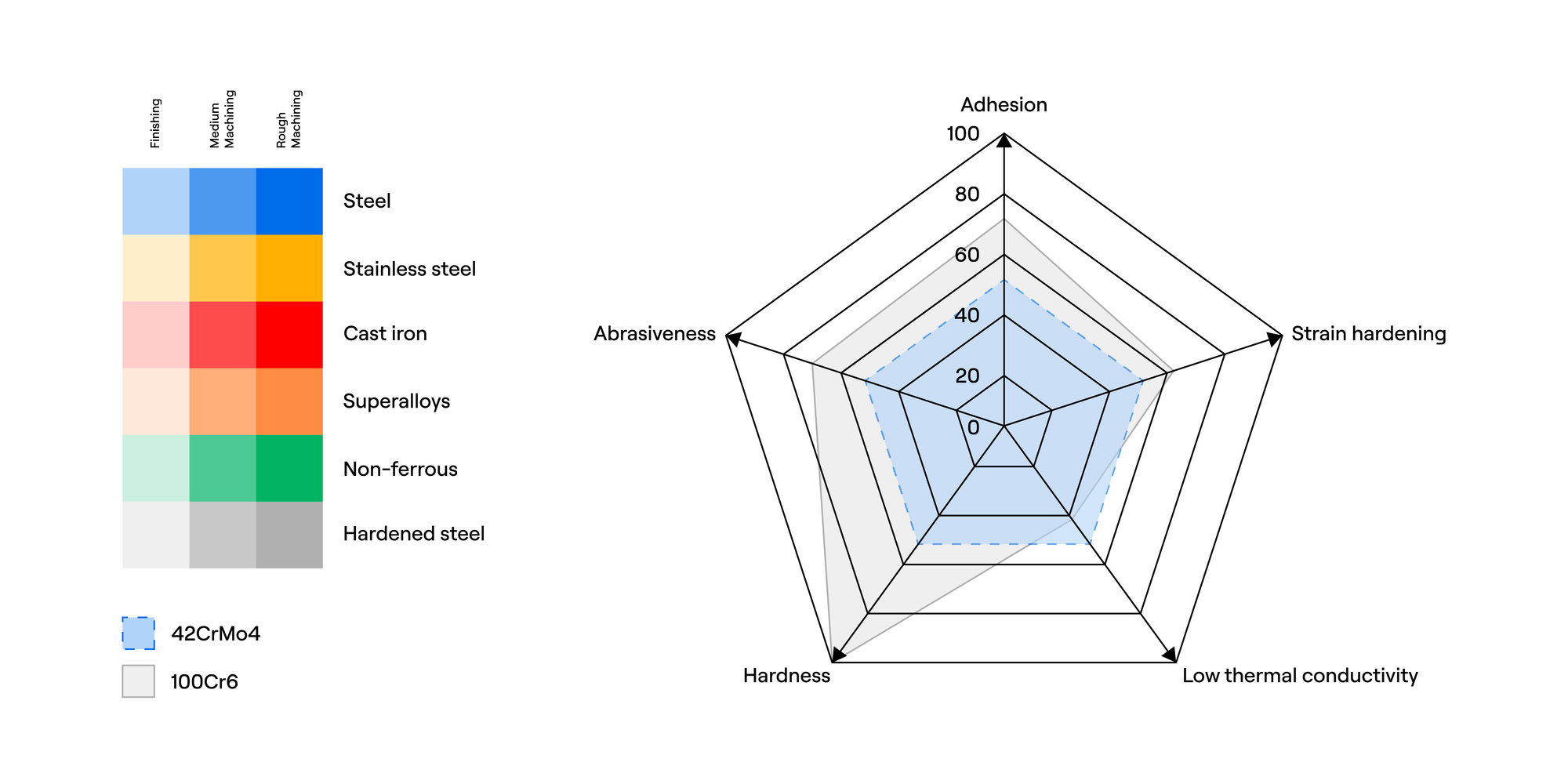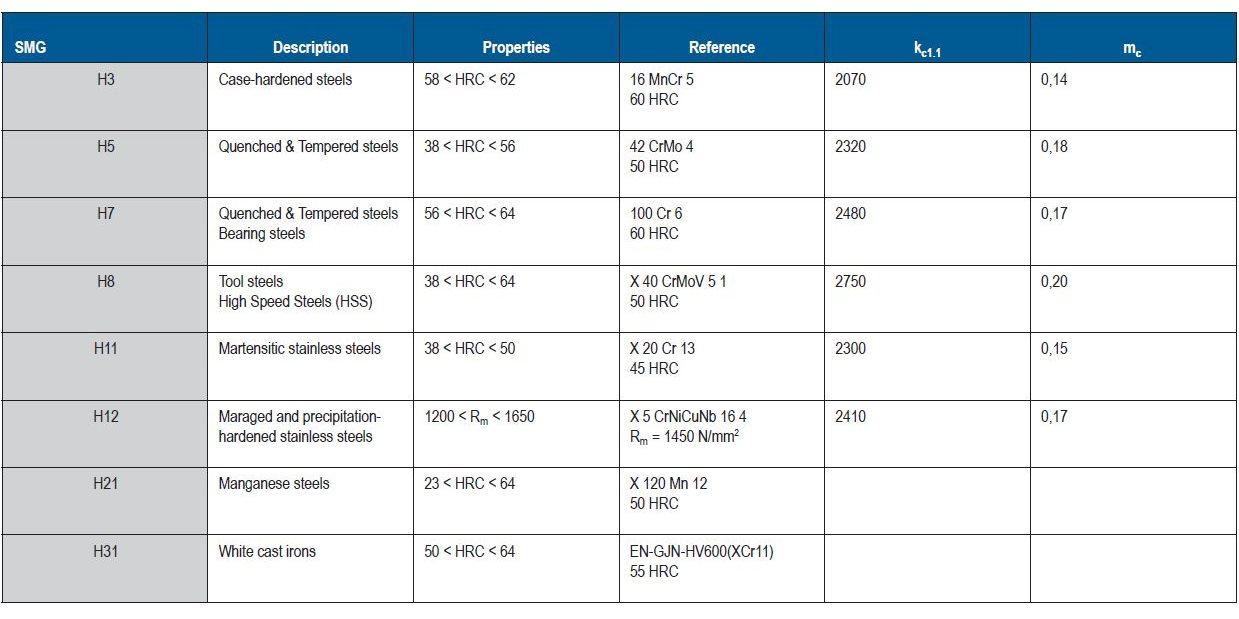What is H material group?
There is a direct correspondence between some of the ISO P and ISO H groups. Depending on the material’s condition, the material may belong to an ISO P group or an ISO H group.There is a direct correspondence between some of the ISO P and ISO H groups. Depending on the material’s condition, the material may belong to an ISO P group or an ISO H group. Materials from P2 & P3 may be found in H3 after hardening, P4 & P5 may be found in H5 and P6 and P7 may be found in H7 after hardening.
Hardened steel is used to make metal objects that are subject to high levels of force or abuse. For example, some automotive parts are made from this material, particularly those used for trucking. Hand tools and drill bits often consist of this type of steel, as do many knives.
One of the primary advantages to hardened steel is its added resistance against wear and abrasion. This material can withstand frequent abuse and heavy loads without damage or failure. It is also better able to resist rust and corrosion than standard steel products.

Seco classifies the machinability of materials based on 5 important properties: abrasiveness, ductility, strain hardening, thermal conductivity and hardness.
Do you want to know more about this material?
Discover our STEP program
You already have an application in mind for this material?
Find the right tool within a minute with Suggest!
Basic guidelines for machining ISO H materials, e.g. hardened steel machining:
- Very high mechanical loads are your main concern (leading to flank and crater wear and breakage of cutting edges)
- Use small to medium depth of cut and feed
- Use cutting speed to balance tool life with economic considerations on the process
- Use specific carbide grades or PCBN cutting materials and strong cutting geometry
- Emulsion (4% – 6%) cooling is advised

ISO H Tab extract
Inline Content - Survey
Current code - 5fce8e61489f3034e74adc64